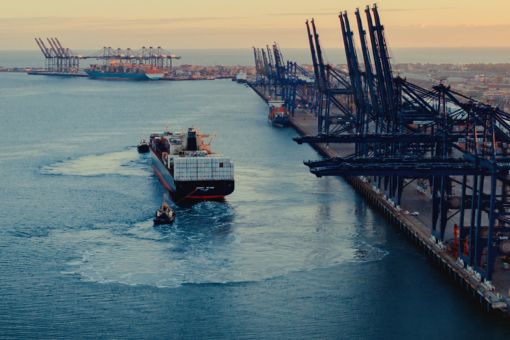Looking ahead, CEOs face a business environment transformed by regulatory, societal, and investor expectations. Sustainability and ethical business practices have moved from voluntary commitments to regulatory imperatives. The growing focus on Human Rights, forced labor, and third-party risk management is redefining global business operations. In this climate of heightened accountability, navigating the complexities of international value chains has become a critical priority.
International value chains are being examined more closely than ever before. Companies are entering a new era where sustainability, ethics, and compliance are no longer optional due to rising public expectations and an expanding body of European regulation. The upcoming EU Forced Labor Regulation (FLR), which will prohibit the sale of goods manufactured using forced labor on the EU market, is one of the most important changes.
Adopted in 2024 and expected to apply from December 2027, the regulation empowers authorities to investigate supply chains, withdraw non-compliant goods, and impose corrective measures. It represents a decisive shift from voluntary disclosure to enforceable accountability, placing supply chain transparency and due diligence at the heart of corporate responsibility.
While full implementation is less than two years away, the complexity of this legislation means that companies must act now. Understanding where forced labor risks exist, how to identify them, and how to build robust due diligence frameworks will take time and coordination across multiple functions.
The power of proactive assessment
The core of the FLR lies in risk-based due diligence. Authorities will expect companies to demonstrate how they assess and mitigate risks of forced labor across their value chains. This requires more than a simple supplier questionnaire. It calls for a structured approach involving:
- Comprehensive supply chain mapping to identify direct and indirect suppliers, including high-risk sectors and regions.
- Forced labor risk assessments combining internal data, supplier engagement, and external intelligence.
- Documentation and traceability systems to evidence the steps taken and corrective actions implemented.
- Ongoing monitoring and reporting to ensure continuous improvement.
Companies that start building these capabilities now will not only be ready for compliance but will also gain deeper visibility into their supply chains, reduce disruption risks, and strengthen trust with regulators and stakeholders.
Forced labor risks are not theoretical; they are present in every global value chain. We know from experience that companies that wait for full regulatory clarity might face the prospect of being un(der)prepared. Integrating forced labor assessments into third-party risk management today is the best way to build resilience for tomorrow.
Why waiting is not an option
Although detailed enforcement guidance will be issued closer to 2026, the expectations are already visible. The EU is moving toward a framework that combines the FLR, Corporate Sustainability Due Diligence Directive (CSDDD), Corporate Sustainability Reporting Directive (CSRD), and EU Deforestation Regulation (EUDR). Together, these regulatory initiatives require companies to identify, prevent, and report adverse impacts on Human Rights and the environment.
Waiting until 2027 to act will leave little time to build systems, train teams, and engage suppliers. The reality is that due diligence takes years to mature. Early movers can shape their approach, test methodologies, and refine data collection before enforcement begins.
At KPMG in Belgium, we already support clients in conducting supply chain assessments, implementing due diligence frameworks aligned with the OECD Guidelines for Multinational Enterprises and the UN Guiding Principles on Business and Human Rights, and preparing for upcoming EU requirements. Our Forensic, Supply Chain & Procurement, and Sustainability experts combine legal, operational, and risk expertise to help companies develop credible, defensible approaches.
How forced labor fits into the broader ESG landscape
Forced labor due diligence is not an isolated compliance exercise. It is part of a broader ESG and sustainability agenda driven forward by European regulation.
- CSRD requires companies to disclose how they manage Human Rights risks, including forced labor, under the European Sustainability Reporting Standards (ESRS).
- CSDDD goes further by mandating actual due diligence processes across global operations and supply chains, with potential civil liability for non-compliance.
- EUDR targets deforestation-linked commodities but uses similar traceability and risk-based principles.
By aligning forced labor assessments with these frameworks, companies can create a single, integrated due diligence system that serves multiple compliance needs and supports consistent reporting.
Integrating forced labor due diligence into Third-Party Risk Management (TPRM)
Effective compliance with the FLR and related regulation requires cross-functional collaboration. Forced labor risks often arise from third parties: suppliers, contractors, and intermediaries, whose practices may fall outside direct control.
Embedding forced labor assessments into a broader Third-Party Risk Management (TPRM) framework ensures that procurement, compliance, ESG, and legal teams work from a unified approach. This enables organizations to:
- Apply consistent risk criteria across all third-party relationships.
- Use data and analytics to identify high-risk entities.
- Engage suppliers through capacity-building and corrective action plans.
- Leverage technology for traceability and monitoring.
A mature TPRM framework is not only a regulatory necessity but a strategic advantage that strengthens operational resilience, reduces supply chain disruptions, and enhances investor confidence.
The KPMG approach
KPMG’s proven methodology helps organizations prepare for the EU Forced Labor Regulation and related due diligence requirements through a phased, practical approach:
- Map: Identify supply chain tiers, high-risk regions, and product categories.
- Assess: Conduct forced labor risk assessments using quantitative and qualitative data.
- Design: Build governance structures and due diligence processes aligned with EU and OECD standards.
- Embed: Integrate procedures into daily operations, supported by training and digital tools.
- Monitor: Establish mechanisms for continuous monitoring, reporting, and remediation.
Our teams support clients from strategy design to operational execution, ensuring solutions are not only compliant but effective and scalable.
Turning compliance into leadership
Forced labor and Human Rights abuse are tangible challenges with immediate consequences for companies operating in global markets. Navigating the evolving landscape of EU regulations (including the CSDDD, CSRD, FLR, and EUDR) requires more than mere compliance; it demands structured risk management and integrated oversight of third-party suppliers. By embedding forced labor due diligence into broader ESG and TPRM frameworks, businesses can protect their reputation, strengthen stakeholder trust, and build long-term resilience.
Building strong due diligence frameworks is central to this effort. Measures such as supply chain mapping, establishing clear governance, and integrating digital traceability tools help companies manage regulatory expectations, protect their reputation, and enhance overall supply chain resilience.
At KPMG in Belgium, we bring together expertise from our Forensic, Supply Chain & Procurement, and Sustainability teams to support companies in this process. Our multidisciplinary approach enables us to help organizations identify, mitigate, and report on forced labor risks in a way that is effective, credible, and aligned with European regulations. We focus on translating complex regulatory requirements into practical solutions, so that businesses can address these challenges with confidence and strengthen their position as responsible market players.
Authors: Sam Singh, Junior Advisor & Amber Thoelen, Junior Advisor & Jens Moerman, Director
Explore
Connect with us
- Find office locations kpmg.findOfficeLocations
- kpmg.emailUs
- Social media @ KPMG kpmg.socialMedia







